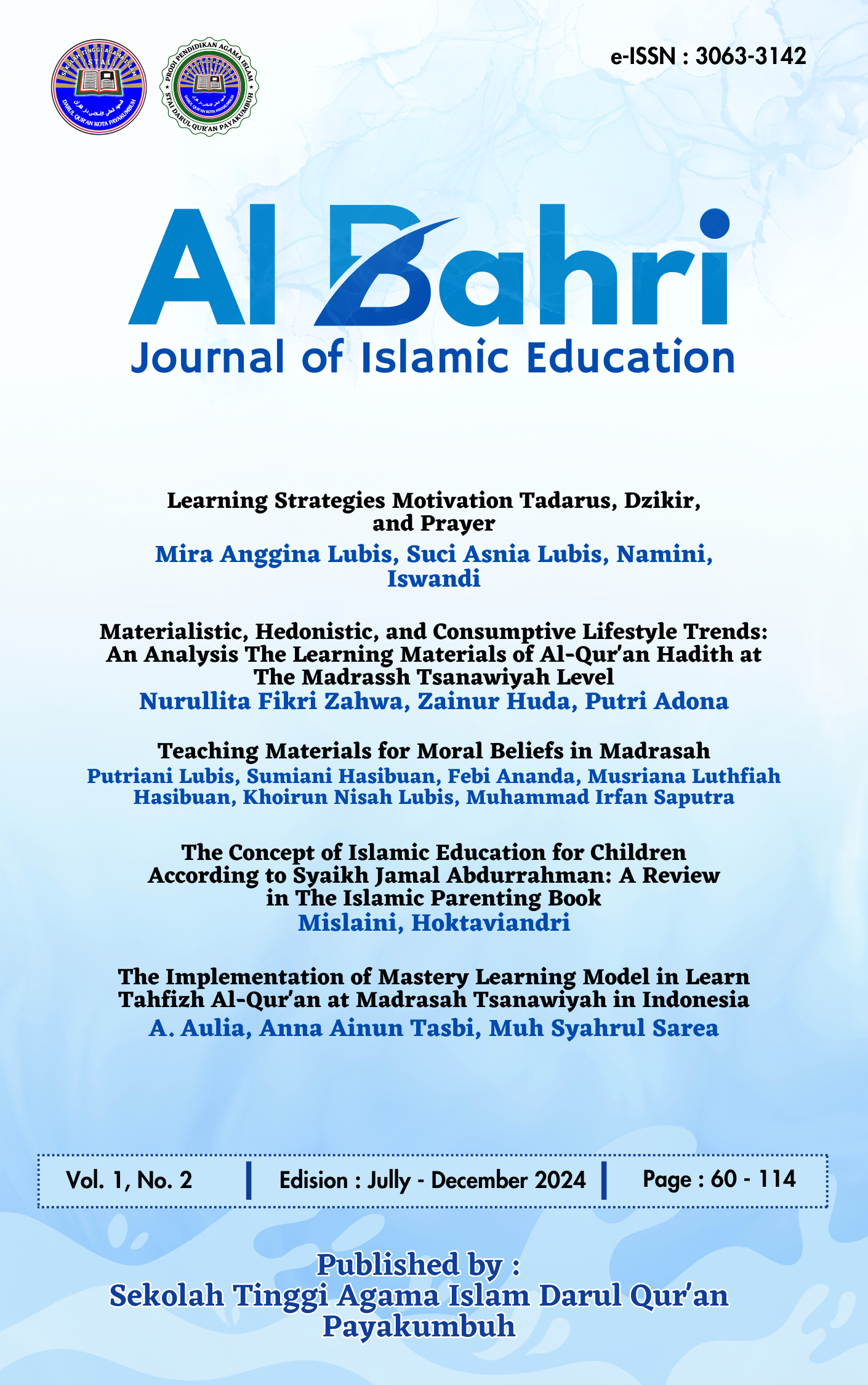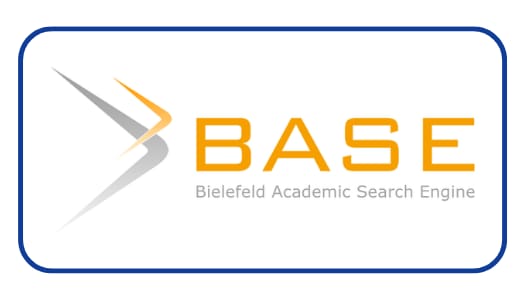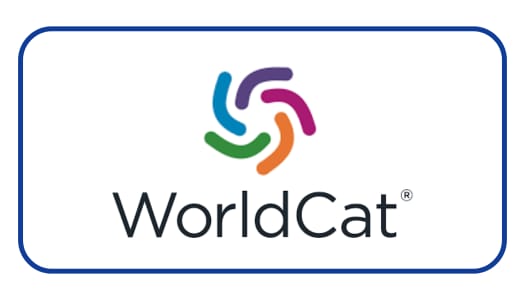Teaching Materials for Moral Beliefs in Madrasah
DOI:
https://doi.org/10.69880/albahri.v1i2.124Keywords:
Moral Creeds, Moral Creeds, Teaching Materials, Madrasah, MadrasahAbstract
Moral creeds are one of the Islamic religious education materials. In the moral creeds material there is explained the basics of belief in Allah, as well as other monotheistic values. Then, the morals material is studied and explained about the concept of morals and the values contained therein. Discussion of faith and morals is important so that students have complete knowledge and understanding of faith, and at the same time they are also able to realize the values of their faith in real life in society in the form of good morals, based on what the Prophet Muhammad SAW taught. as a role model. For this reason, the field of faith study must be constructed from correct materials and included within the scope of the field of faith study. This research uses the literature method by first collecting study materials and materials from various sources, namely books, journals, articles and other sources related to teaching materials on moral beliefs in madrasah
Downloads
References
Al-Banna, H. (2017). Ta'lim treatise. Jakarta: Gema Insani Press.
Amri Muhammad, Ahmad et al. (2018). Moral Aqidah. Makassar: Rosina Mosiba.
Asfahani. (2019). Model for Development of Moral Creed teaching materials. Qalamuna: Journal of Education, Social and Religion, Vol. 11, no. 1,.
Azra, A. (2020). Basics of Islamic Faith and Morals. Jakarta: Kencana.
Edidarmo, Toto. (2017). Aqidah ahklak madrasah aliyah class XI. Semarang: PT Karya Toha Putra.
Fitri, Lilis, et al. (2019). Efforts to Improve Student Learning Outcomes in Moral Creed Subjects through the Lectures Vary Method. Islamic Education Research Journal, Vol 7, No.1,39.
Hidayat. 2020. The Role of Morality in Building Student Character, Islamic Studies Journal, Volume. 9, Issue 2.
Hidayati, S., Wulandari, R., & Matondang, S. (2022). Analysis of Aqidah Learning Materials in Strengthening Children's Aqidah in Elementary School Age Children. Al Urwatul Wutsqa: Islamic Education Studies, Vol.2, No.1.
Karim, Abdul. 2019. "Education in Faith and Morality in Islamic Perspective," Journal of Islamic Education, Volume. 7, Issue 3.
Kurniawati, F. E. (2015). Development of Aqidah Moral Teaching Materials in Madrasah Ibtidaiyah. Research Journal, 377.
Kosasih, E. (2021). Development of Teaching Materials. Jakarta: PT Bumi Aksara.
Muhiyi, (2023). Islamic Religious Education, Aqidah Akhlak. Ponorogo: Uwais Inspiration for Indonesia
Nasruddin, et al. (2022) Development of Teaching Materials. Padang: PT Global Executive Technology.
Nasution, H. (2019). Morals in Islam. Bandung: Mizan.
Nurhayati, Isnaini. (2021). Teaching materials in elementary schools. Jambi: Djuanda University, Bogor.
Riyatno, M. (2021). Development of Aqidah Moral Teaching Materials in Madrasah Ibtidaiyah. SKULA: Journal of Madrasah Teacher Professional Education, Vol. 1, No. 2, 302.
Sahari. (2022). Development of Aqidah Moral Teaching Materials at Hidayaturrahman Manggala Tsanawiyah Madrasah. Journal of Educational Research and Development, Vol. 9, no. 1
Susiba. (2020). MI/SD Moral Creed Learning Method. EL-Ibtidaiy: Journal of primary Education58-59.
Martyr, Daily. (2021). Moral beliefs of Madrasah Tsanawiyah class 8, Jakarta: PT Bumi Aksara.
Waraulia, Asri Musandi. (2020). Teaching materials: Preparation Theory and Procedures. East Java: UNIPMA Press (IKAPI Member)
Downloads
Published
How to Cite
Issue
Section
License
Copyright (c) 2024 Putriani Lubis, Sumiani Hasibuan, Febi Ananda, Musriana Luthfiah Hasibuan, Khoirun Nisah Lubis, Muhammad Irfan Saputra

This work is licensed under a Creative Commons Attribution-ShareAlike 4.0 International License.




















